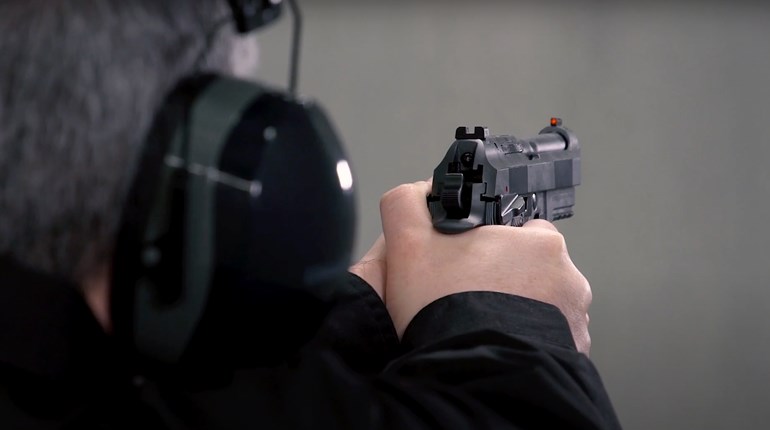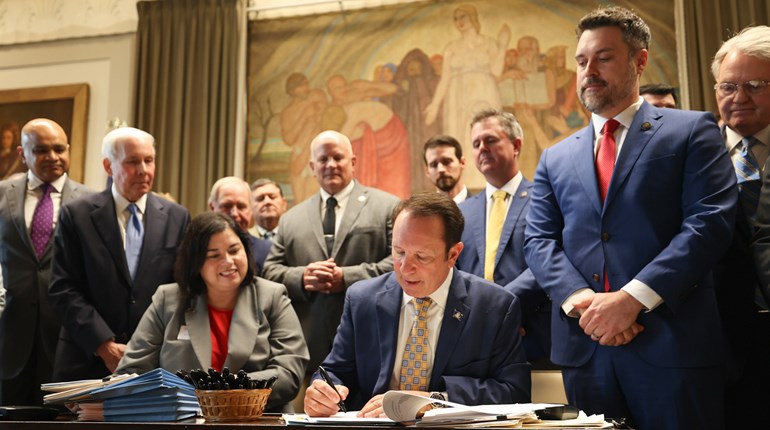
“More often than not, when mountain man met grizzly, one or the other, usually the trapper, picked a fight. The trapper, especially if traveling with a companion or two, customarily tackled the grizzly for the hell of it, more than from a need of meat or fur. Hunting the great bear was exciting business.”
So writes George Laycock in his book The Mountain Men: The Dramatic History and Lore of the First Frontiersmen. And as Laycock goes on to point out, the 42 men of the Lewis & Clark Expedition (1804 -1806) were no exception when it came to grizzly bears.
Their obsession with grizzlies began at the large Mandan Indian village along the Missouri River where they spent their first winter. It was during the long, cold evenings huddled around lodge fires that the Mandans warned the two captains about the “great white bear” they could expect to encounter as they moved further west the following spring. But Lewis and Clark paid little mind, believing any bear would quickly succumb to their flintlock rifles, just as black bears had back east. They would soon come to believe differently. In fact, it was because of grizzlies and other large western game, such as bison and elk, that the heavy, large-caliber, percussion-cap Hawken rifle became the preferred firearm of mountain men.
One of the first grizzlies the expedition encountered was resting in the open near the river as the men paddled upstream in canoes. Spotting the bear, the last two canoes pulled ashore and six men quietly got out, approaching to within 40 yards and taking cover below the edge of the riverbank. Four of the hunters took aim, the other two agreeing to hold their fire in case additional shots were needed. Upon a given signal, the four hunters fired, all hitting the bear, two of the shots penetrating its lungs.
But rather than roll over and die as the hunters expected, the grizzly immediately rose with a roar and charged in the direction of the blackpowder smoke hanging in the air. The additional two hunters then fired, both also hitting the bear, one of the lead balls breaking its shoulder. That slowed the bear down, but certainly not stop it. Unable to reload quickly enough for a second shot, two of the men leaped into a canoe and shoved off into what they thought was the relative safety of the river. Two others hid in riverside willows and were able to reload their muzzleloaders, firing again. The last two hunters, with the bear rapidly closing the distance, threw down their rifles and dove into the river from the 20-foot-high bank.
Upon reaching the riverbank, the wounded grizzly never hesitated. It launched itself chuffing and snarling into the river, landing nearly on top of the two hunters who had just jumped in. The episode finally ended when one of the hunters still on shore was able to reload his rifle a second time and shoot the bear through the head. Once the six hunters had calmed down enough to begin butchering the bear, they counted, “…eight balls that had passed through him in different directions.”
One of the largest grizzlies taken by the Lewis & Clark Expedition was shot and killed by the group’s designated hunter, George Drouillard, a hardened, experienced frontiersman, and his assistant, Joseph Fields. It was their job to hunt along the river’s shoreline to provide camp meat, while the other men of the expedition paddled, poled, pulled, or, if the wind was right, sailed the boats upstream. Game was plentiful as they crossed the Great Plains, and during one day alone the duo killed nine elk and three grizzlies, one of which was huge. That may seem like a lot of meat, but keep in mind the many men of the expedition were each consuming 10 pounds or more of meat per day because of their strenuous work.* (See note at end of story.)
On that particular afternoon, Drouillard and Fields had come across the tracks of the huge grizzly at the edge of a thicket, but wisely chose not to follow them in. Instead, the two hunters climbed a nearby tree and began yelling insults at the bear. As Drouillard expected, the grizz soon appeared directly below them looking for a fight, and he killed it with one shot through the head. The bear’s hind feet measured 7 inches across and nearly 12 inches in length, “…exclusive of the tallons.”
In another instance, Captain Clark and Drouillard killed a grizzly. In his book Undaunted Courage: Meriwether Lewis, Thomas Jefferson, and the Opening of the American West, historian Stephen Ambrose wrote, “Lewis described it as a ‘most tremendous looking animal, and extremely hard to kill notwithstanding he had five balls through his lungs and five others in various parts, he swam more than half the distance across the river to a sandbar and it was at least twenty minutes before he died; [he] made the most tremendous roaring from the moment he was shot.’”
The men had no way of accurately weighing that bear, but Clark thought it would go at least 500 pounds and Lewis thought 600. A week later, another grizzly was seen swimming the river, but disappeared before the men could give chase. It was probably for the best, as Lewis wrote in his journal that evening, “I find that the curiosity of our party is pretty well satisfied with respect to this animal.”
The Lewis & Clark Expedition was a success, but not in the way President Thomas Jefferson had envisioned. His ultimate hope, in addition to learning exactly what he and the fledgling United States had bought with the Louisiana Purchase, was that the Corps of Discovery would find the “Northwest Passage,” the fabled continuous water route leading to the Pacific Ocean. That, in turn, would lead to expanded trade with China. But Lewis and Clark found no such water route, because it didn’t exist.
Instead, they discovered a majestic, extremely varied continent—prairies, deserts, forests, snow-capped mountains and more—inhabited by 70-some Native American tribes. In addition, they encountered wildlife riches untold. Millions of bison roamed the plains, and hundreds of thousands of beaver and other furbearers, whose pelts were ripe for the taking, swam the many wilderness rivers and streams. It was the Lewis & Clark Expedition that started the mountain men west to the shining mountains.
*Consuming 10 pounds or more of meat daily, with little else to balance their diet, led to serious constipation for some of the men of the Corps of Discovery. They relieved themselves by taking powerful laxative pills—sometimes as many as a handful at a time—that they had brought along for just such situations. The men humorously dubbed the pills “Thunder Clappers.”






































